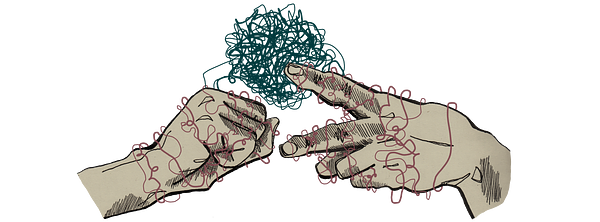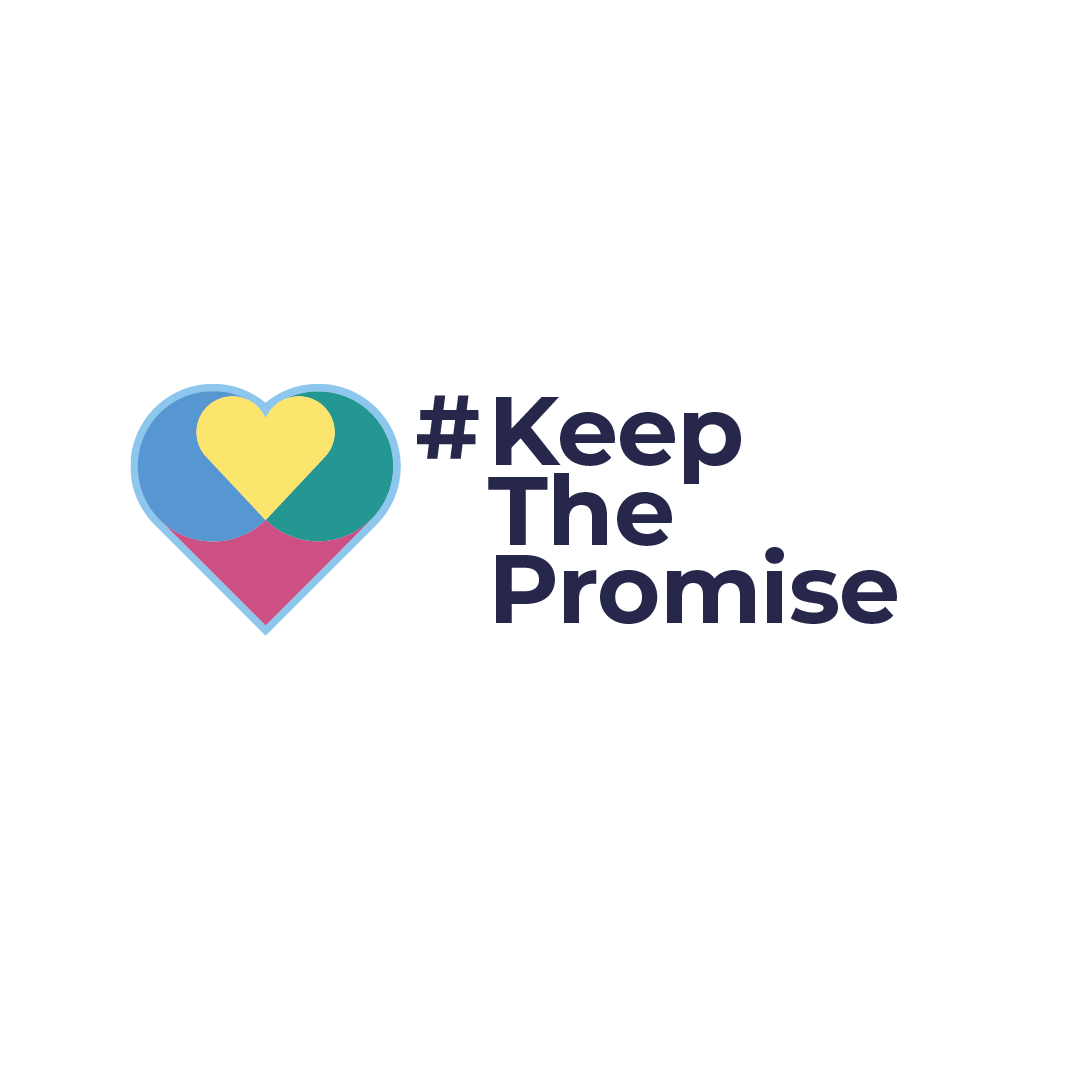Brain Chemicals and Emotional States

Brain Chemicals and Emotional States
Summary
- Brain chemicals, or neurochemicals or neurotransmitters, have a profound effect on how we think, feel and act.
- Given the changes in their brains and bodies, teenagers are especially sensitive to the effects of neurochemicals.
- Many of the behaviours associated with teenagers, from risk-taking behaviour, sleeping late, moodiness, to listening to peers rather than elders, can be attributed to the effect of neurochemicals.
- To lessen conflict within the family home, it’s important for teenagers, and their caregivers, to develop healthy coping mechanisms to manage stress and support overall wellbeing over this transitional period.
- Neurochemicals work together in the brain, creating what you might call ‘cranial cocktails’ that induce different emotional states, such as ‘fight or flight’ or ‘freeze and shutdown’.
Brain chemicals, also known as neurochemicals or neurotransmitters, are messengers on a molecular level that travel through brains, delivering signals to cells that affect how you think, feel, and act.
Neurochemicals are produced in the nerve cells, or neurons, within the brain and throughout the nervous system. These neurons release neurotransmitters into the synapse – which is the small gap between neurons – when a nerve impulse reaches the end of a neuron.
Neurochemicals, have the same properties from person to person but how a person then acts under the influence of that drug will differ. Your actions will depend on several factors, such as age and experience.
We’re going to look now at a series of neurochemicals, the properties of each, and how it might affect young people.
Brain Chemicals involved in flight or flight
Neurochemical: Cortisol Description: The “stress hormone” or “protector drug” What it does: Acts as your body's built-in alarm system. When you encounter a stressful situation, whether it's a looming deadline or an encounter with a barking dog, your body releases cortisol to control your energy release. It can boost your energy and also conserve energy buy slowing down non-essential functions. Cortisol increases focus and ability to access memories so that we are able to tackle whatever challenge lies ahead. However, too much cortisol can cause the mind to be inflexible. Prolonged stress and release of cortisol can affect brain development. Involved in: flight or flight responses; also plays a crucial role in regulating various bodily functions, like metabolism, immune response, and blood pressure. It’s also involved in the “Freeze and Shutdown” emotional state. That’s because what cortisol actually does is regulate how the body uses glucose. This allows it to release instant energy, but it also allows it to slow down all the non-essential bodily functions, which is what happened in “Freeze and Shutdown”. How does it affect teenagers: During adolescence, when hormonal changes are abundant and academic pressures and social challenges are high, cortisol and adrenaline play significant roles in the body's response to stress and excitement. Elevated cortisol levels during stressful periods can affect mood, cognitive function, and emotional regulation in teenagers, potentially contributing to symptoms of anxiety or depression. Too much cortisol can damage brain development and immune system. How can we help teenagers: Given the potential effect of cortisol, it's important, then, for teenagers to develop healthy coping mechanisms to manage stress and support overall well-being during this transitional period.
Neurochemical: Adrenaline Description: The "action" drug What it does: When adrenaline is released in your brain, your senses are sharpened, you suddenly have a lot more energy and you find that you can outperform what you normally do physically. Adrenaline sends more oxygen to the muscles to help you fight or to run away. How does it affect teenagers: Excessive or chronic activation of the adrenaline response, such as from ongoing stress or anxiety, can potentially lead to negative effects on teenagers' physical and emotional well-being, including heightened anxiety levels or disrupted sleep patterns. How can we help teenagers: As is the case with cortisol, teenagers benefit from maintaining strong coping mechanisms to manage stress and support well-being.
Happy Hormones
Neurochemical: Dopamine Description: The "joy” drug What it does: Provides sensations of pleasure and reward. It's what makes you feel happy when you achieve a goal or receive a compliment. How does it affect teenagers: Research suggests that the baseline level of dopamine in teenagers in comparison to adults is lower – but its release in response to experience is higher – which can explain why teens may report a feeling of being ‘bored’ unless they are doing something particularly new and exciting. It can lead to the risk-taking behaviours common in adolescence like drinking, smoking, sex and driving too fast.
Neurochemical: Serotonin Description: The “mood” drug What it does: Provides sensations of pleasure and reward. It's what makes you feel happy when you achieve a goal or receive a compliment. It regulates emotions, mood, and sleep by keeping you feeling balanced and content. It is similar to Dopamine because it boosts your mood and relaxes you. How does it affect teenagers: Serotonin helps regulate mood and emotional stability. Fluctuations in serotonin levels during adolescence can contribute to mood swings, anxiety, and depression, which are common during this transitional period. Low levels or serotonin can cause depression at all ages.
Neurochemical: Oxytocin Description: The "comforting" drug What it does: When you encounter someone you like, your brain releases dopamine, your serotonin levels increase, and oxytocin is produced. Feelings of safety and comfort follow, improving social connections, communication and self-confidence, and reducing anxiety. How does it affect teenagers: When it comes to teenagers, these three neurotransmitters play a crucial role in their emotional and social development. Overall, these neurotransmitters contribute to the complex range of teenage emotions and social interactions, shaping their experiences and behaviours during this important stage of development. How can we help teenagers: Teenagers often engage in activities which stimulate the release of our ‘happy hormones’. Healthy risk-taking is an important part of developing independence and self-identity, but when the risk-taking becomes unhealthy, this can be dangerous. Caregivers have to learn when to watch and when to intervene. It’s not a science and caregivers will get it wrong at points, creating conflict, which is why it’s important to have the skills to know how to end an argument well.
Other neurochemicals
Neurochemical: Endorphins Description: The “pain relief” drug. What it does: They are your body's natural painkillers and mood boosters. When you engage in activities like exercise, laughter, or even eating chocolate, your body releases endorphins, which help reduce pain and promote feelings of pleasure and wellbeing. Endorphins also play a role in relieving stress and anxiety, helping you cope with life's challenges and boosting mood. How does it affect teenagers: For teenagers, endorphins can be particularly influential in managing the ups and downs of adolescence. As teenagers navigate the challenges of school, relationships, and identity formation, engaging in activities that stimulate endorphin release, such as exercise, sports, or spending time with friends, can provide valuable relief from stress and anxiety. Endorphins not only help alleviate physical discomfort but also contribute to a sense of wellbeing and resilience, enabling teenagers to cope more effectively with the emotional rollercoaster of adolescence. Additionally, the social aspect of endorphin-releasing activities, such as team sports or group workouts, can foster connections with peers and provide a supportive environment for teenagers to navigate the complexities of teenage life. How can we help teenagers: Given that endorphins serve as a natural buffer against the challenges of adolescence, promoting both physical and emotional health during this formative stage of development, activities such as exercise that release endorphins into the brain should be encouraged where appropriate.
Neurochemical: GABA (gamma-aminobutyric acid) and Glutamate Description: The ‘balancing’ drugs What it does: Each play essential roles in balancing brain activity. GABA is the calming influence, acting like a gentle brake that helps quiet down overexcited brain signals. It's what helps you relax, unwind, and feel at ease after a long day. On the other hand, Glutamate is the go-getter, acting as the main excitatory neurotransmitter that revs up brain activity. It's responsible for sharp thinking, learning new skills, and staying focused on tasks. Together, GABA and Glutamate work in harmony to maintain a delicate balance of activity in the brain, ensuring that it functions smoothly and efficiently. How does it affect teenagers: During the tumultuous teenage years, the delicate balance between GABA and Glutamate can have profound effects on mood, behaviour, and cognitive function. GABA's calming influence becomes particularly important as teenagers navigate the stresses and pressures of adolescence, helping to mitigate feelings of anxiety and promote relaxation. However, disruptions in GABA signaling, such as imbalances caused by chronic stress or genetic factors, can contribute to mood disorders like anxiety and depression, which are common during adolescence. Conversely, Glutamate's excitatory effects play a crucial role in learning and memory, shaping teenagers' ability to absorb new information, adapt to changing environments, and develop important skills. How can we help teenagers: Excessive glutamate activity or imbalances in glutamate signalling may contribute to neurodevelopmental disorders, such as attention-deficit/hyperactivity disorder (ADHD) or autism spectrum disorders, which can affect teenagers' cognitive function and behaviour. Overall, the delicate interplay between GABA and glutamate neurotransmission influences various aspects of teenage brain function, contributing to their emotional wellbeing and cognitive development during this critical period of growth and change.
Neurochemical: Melatonin Description: The ‘sleep’ drug What it does: Melatonin regulates your sleep-wake cycle. Produced by the pineal gland in the brain, melatonin levels rise in the evening as darkness falls, signalling to your body that it's time to wind down and prepare for sleep. Melatonin helps you fall asleep faster, stay asleep longer, and experience more restful sleep throughout the night. It's particularly sensitive to light, so exposure to bright lights, especially from screens like phones and computers, can disrupt melatonin production and make it harder to fall asleep. How does it affect teenagers: For teenagers, melatonin plays a crucial role in regulating sleep patterns during a time when sleep habits often undergo significant changes. Melatonin production, influenced by hormonal changes and increased sensitivity to light, starts later in the day for teenagers than it does for children and adults. Teenagers often don’t get the eight to ten hours’ sleep that they need because they are going to bed later, with the requirement they attend school, cutting short lie-ins, which can explain irritability. How can we help teenagers: As young people sleep, their bodies secrete growth hormone, a reason to be more understanding when young people have lie-ins that seem to adults to be self-indulgent. They’re not being lazy; their minds and bodies need a greater amount of sleep to grow and prosper. Insufficient sleep can have significant effects on teenagers' physical health, mental well-being, and academic performance, emphasizing the importance of maintaining healthy sleep habits and minimizing disruptions to melatonin production during this critical stage of development.
Emotional States
SCCR’s psychoeducational digital resource ‘The Brain’s Amazing Drugs Cabinet’ provides further learning on neurochemicals that a young person can work through alone or with a caregiver or in a group led by, for example, a teacher or youth leader.
‘The Brain’s Amazing Drugs Cabinet’ examines neurochemicals that work together to create different emotional states. The resource provides learning on how these chemicals create ‘cranial cocktails’ that influence behaviour.
On our ‘Brain’s Amazing Drug’s Cabinet’ web page you’ll find various emotional states represented as an ‘emotional homunculus’, illustrated figures representing ‘Fight or Flight’, ‘Anxious and Afraid’, ‘Freeze and Shutdown’ and so on. On the same page you’ll find a breakdown of the brain chemicals that create the ‘cranial cocktails’ that so affect our behaviour.
Let’s take a closer look at those emotional states.
1. Rest and Digest
“Rest and Digest” describes the more relaxed functions of the body including those that help maintain our short-term needs and our long-term health by producing a state of equilibrium in the body.
“Rest and Digest” plays a vital role in maintaining both mental and physical health by helping the body to calm down from stress reactions. It’s essential for our long-term health, improved digestion, energy conservation and the regulation and maintenance of the body’s immune, regenerative, reproductive and circulatory systems and cognitive function. Without the “Rest and Digest” response, the monitoring and regulation of everyday body processes would be impossible.
“Rest and Digest” is the emotional state in which you are least able to responds quickly to external stimuli or any threat. The body feels relaxed and heavy and sudden movement becomes more difficult.
The brain chemicals released during this state – oxytocin, serotonin, endorphins – make you more relaxed and receptive to affection and you are more likely to demonstrate positive emotions and affection yourself.
On the other hand experiencing stress – from a real or perceived threat means that the body cannot enter into rest or digest. Long term stress means that the body is not able to rest and refuel, digestion is inefficient with the right types and amount of nutrients not being absorbed and digestive juices are not released and energy is directed from digestion to keeping the body alert and anxious ready for a danger signal.
2. Alert and Engaged
In “Alert and Engaged” your eyes are wide open, your senses are alert and tingling, and you are anticipating action and excitement. “Alert and Engaged” is the optimum state for your thought processes, and enhanced creativity and concentration.
In nature the state of alert and engaged is best demonstrated in animals when the young cubs are at play, and when the adults are in pursuit of sex or prey. The difference between a leopard lying in the long grass, senses heightened, muscles primed, stalking its prey and one coming under attack from a herd of wildebeest serves to illustrate the difference in mammals between the states of “Alert and Engaged” and “Fight or Flight”.
The body experiences the “Alert and Engaged” response when triggered by interpersonal, auditory, visual and (increasingly) digital media stimuli. It involves GABA and glutamate, dopamine and adrenaline.
In humans, “Alert and Engaged” is experienced in a number of ways: just prior to exercise or sport when you’re warming up and ready to participate, before a performance of any kind football, running, dancing, watching a film, playing a game, going to a party, meeting up with friends or being introduced to new people, playing a musical instrument or singing, getting on a roller coaster or learning a new skill - in fact just prior to doing something that you anticipate as enjoyable or something that requires your complete attention.
3. Anxious and Afraid
In “Anxious and Afraid”, the perceptive/awareness and positive intent of “Alert and Engaged” tips over into nervousness and dread. Neurochemically, “Anxious and Afraid” is the same as “Alert and Engaged”, but with dopamine swapped out for cortisol.
Many of the activities which may be anticipated with pleasure in “Alert and Engaged” become fraught with apprehension in “Anxious and Afraid”.
In a state of “Anxious and Afraid” the preparation for playing a sport, a musical instrument or even a game can become stressful as all the senses are heightened to anticipate what could go wrong. If a person has more positive experiences and therefore more memories associated with the activity then you are more likely to respond to build up your confidence and proceed. If the activity is associated with negative experiences and memories then these are replayed in your mind. Your senses begin to become alert to more stimuli for things to go wrong: you might trip on the way to the stage or your friends may laugh at you (like they did the last time) and you will tend to notice mainly the negative stimuli and ignore the positive (you notice the one friend who is on their phone and not the five others who are clapping and cheering you on).
In extreme cases such as in stage fright, you are actually so afraid that you are unable to access any memories at all – possibly also because your ability to make (positive) memories has not been well-exercised and so you have a “weak muscle” when it comes to accessing positive experiences. The very act of forgetting how to remember is what makes stage fright so complete and paralysing; far from simply fearing having a bad experience, you can forget your lines, how to play the instrument and how to kick a ball! Or rather, you don’t really forget but your emotional state has shutdown access to those memories completely but temporarily.
4. Fight or Flight
“Fight or flight” is one of our most primitive - and also most commonly known – emotional states, and it is precipitated by two of the brain’s most powerful drugs – cortisol and adrenaline.
Like all other mammals, humans respond to threat by preparing to give battle or to run away, with both options having a single purpose: survival. In a situation of real threat, there is no distinction between either choice except for the likelihood (or more accurately, the quickly-calculated odds) that will allow the organism to survive. Bravery and cowardice are purely human constructs; biology simply requires that life should endure.
Modern life does not produce many situations in which a stimulus requires us to fight or run away. However, the emotional state does not distinguish between real and perceived threat.
The sympathetic nervous system evolved to respond to any threat – however unlikely – and is finely tuned enough to respond to an organism’s ability to learn from experience but continue to be activated and triggered at the slightest elevation threat levels. It takes 1/20th of a second for the brain to perceive a threat, release adrenaline into the blood steam and trigger the body’s fight or flight response, for both real and imaginary threats.
Adrenaline is known to remain in the bloodstream for an hour after the initial threat that causes its release has passed. If the “Fight or Flight” state is triggered too often then the pressure put on the affected organs can lead to a number of long-term health complications.
Even in the shorter term it takes longer to recalibrate from “Fight or Flight” back into “Rest and Direct” so reparative and regenerative processes are disrupted for longer. The excess energy produced in this state when not actually expended in fighting or fleeing, or some appropriate physical activity, can affect your mood and leave you feeling restless, agitated or frustrated without seeming cause.
5. Freeze and Shutdown
“Freeze and Shutdown” is the state that the body adopts when neither fight nor flight is a viable option for survival. The only neurochemical involved is cortisol.
Though it might be taken for surrender or giving up “Freeze and Shutdown” is an extreme extension of the organism’s main purpose: survival.
Scientists believe that the “Freeze and Shutdown” response evolved as a way of deceiving the predator: by being really still the mammal/organism is less likely to further attract the predator’s attention, by playing dead the organism can put off certain predators who will only eat freshly killed meat, and if the ruse fails then the reduced blood flow and natural analgesics produced in the Freeze and Shutdown state will reduce damage and pain and offer the prey a chance of survival, however slim.
The Freeze response also comes into play between animals of the same species. In rutting, play or establishing dominance in packs, hierarchies and communities of mammals, the Freeze response denotes submission, in exchange for which acknowledgement the dominant animal will leave the submissive one alone.
In human interactions, the freeze response is activated to trigger the same dynamic - to make the organism under threat invisible, uninteresting or acknowledging submission to the attacker/threat, but comes most violently into action in cases of violence, abuse and verbal physical and sexual assault. The “Freeze and Shutdown” response is thought to be responsible for blackouts and memory loss experienced by victims of trauma, prolonged or childhood abuse.
The “Freeze and Shutdown” response is an extreme state activated for survival in periods of acute danger, but if activated repeatedly or frequently (especially if fight or flight does not work, such as in a situation of abuse) then it wears down the resilience and adaptability of the person and increases the effects of trauma. In these circumstances people who resort to a freeze or shutdown response can experience dissociative disorders including anxiety attacks, panic attacks and PTSD.
The Brain’s Amazing Drugs Cabinet
For those who want to learn more or hold sessions that draw on our work, our website’s The Brain’s Amazing Drugs Cabinet microsite has free downloadable booklets, short films, posters and digital cards.
- Click here to learn more about the ‘Brain’s Amazing Drug’s Cabinet’.
- Click here to access downloadable booklets, posters and cards.
References and Further Reading
- What are Neurotransmitters? by Jennifer Berry. Medical News Today, 2024.
- Neurotransmitters. Cleveland Clinic, 2022.
- Melatonin – a hormone used for sleep problems. NHS, 2023.
- The Role of Cortisol in the Body. HealthDirect, 2022.
- How Dopamine Influences Your Mental Health by Sarah Sheppard. Very Well Mind, 2023.





